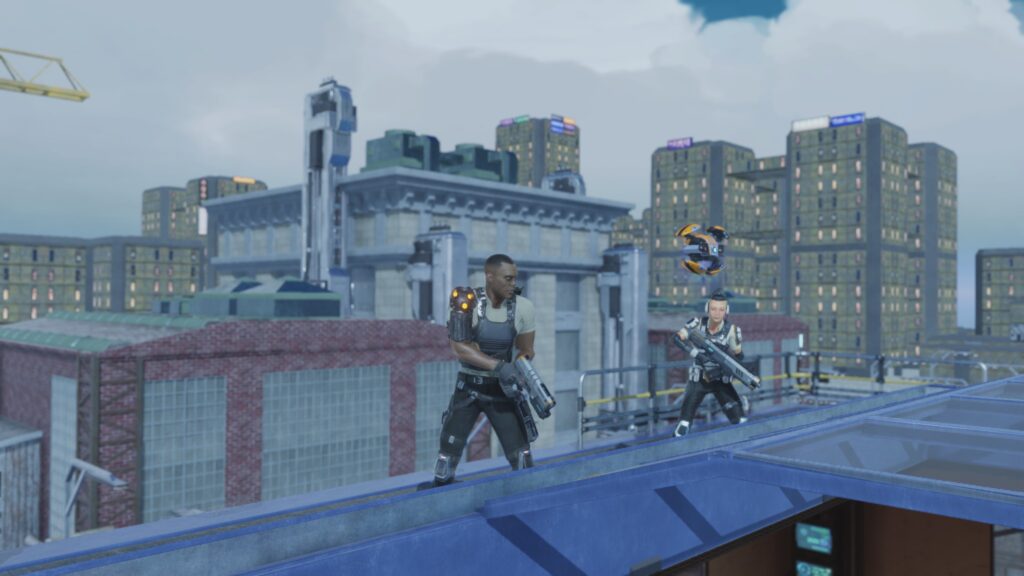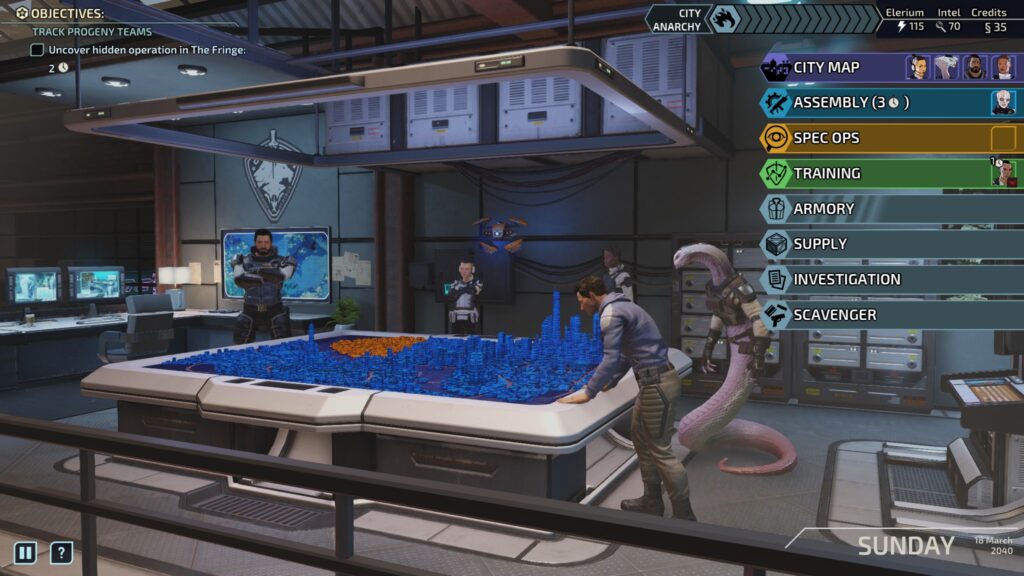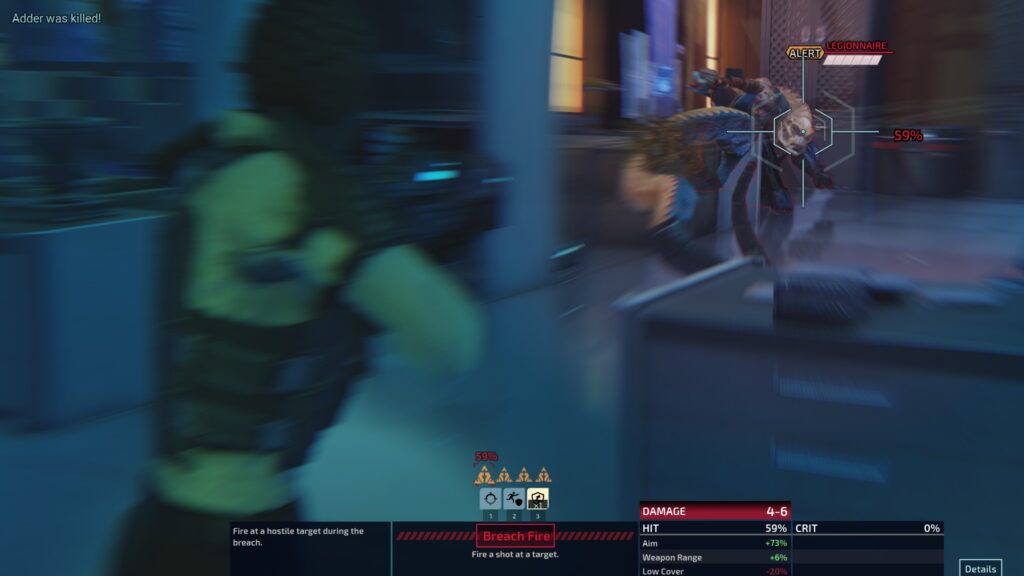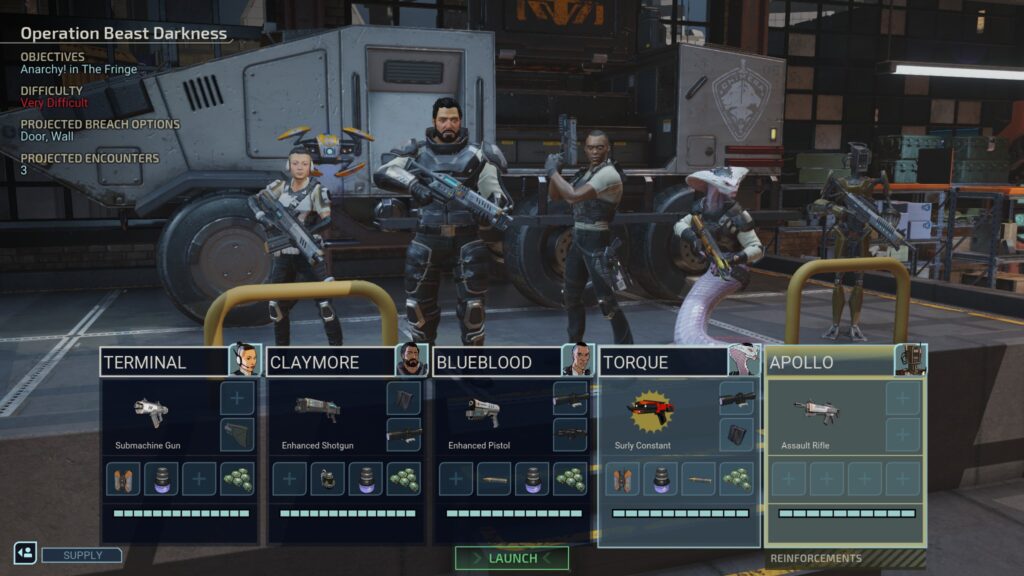
I never got around to playing the War of the Chosen expansion pack for XCOM2 which was probably a mistake given how good everyone says it is. This smaller, standalone builds on it with human and alien populations having achieved peace but naturally there are still dissident factions from both sides who are unhappy. This game puts you in control of Chimera Squad, composed of both human and alien soldiers, who are assigned to keep the peace in City 31. This squad isn’t part of XCOM but the Reclamation Agency meant as a police force rather than a military force. Unlike the XCOM games, each member of the squad is a unique individual and losing even one of them means game over.
Several years after the defeat of the ADVENT regime on Earth, City 31 is a model where humans and aliens are supposed to live peacefully together. However soon after Chimera Squad is sent there to supplement the city’s police department, the progressive mayor Nightingale is assassinated in a terrorist attack. Investigations reveal three criminal organizations active in the city, the doomsday cult known as the Progeny who are led by human psionics, a gang of aliens who are finding it difficult to fit into Earth society called Gray Phoenix, and Sacred Coil, a group of former ADVENT soldiers who want to continue the war. Chimera Squad needs to take down all three groups while working out who killed Nightingale and why, while expanding their roster, developing their local network of contacts and requesting more advanced equipment from XCOM.

This is a spinoff from the main game, and consequently experiments more with the established gameplay formula. Unfortunately this also seems to mean that it can get by with lowered quality standards because there’s a distinct lack of polish here. The tactical mode is mostly okay though I did some missing text strings here and there. The strategic layer however has a janky and inconsistent user interface that takes some getting use to. I don’t believe that it properly explains that elerium, intel and cash are three separate resources and I spent a long time flailing around wondering what intel does. Most of all, the art, slides and assets in general are fairly low in quality. Seeing the APC go out and come back is okay the first time but it’s the exact same animation every time and you don’t even get to upgrade the APC. The whole game is playable of course. Nothing is actually broken. But its production values are distinctly unimpressive.
I do love the tactical gameplay changes though. Each mission is streamlined to have from one to three encounters, basically firefights. Each encounter starts with your team of four breaching a room, crashing through a window, rappelling down from the roof and so on, and you get a chance to catch the enemy by surprise during this phase and shoot at them. After that the fight proceeds with interleaved turns in which your own soldiers act in between rounds taken by individual enemies instead of everyone on one side acting together. There’s no downtime between fights. The moment all enemies are down or the objectives are complete, you’re automatically taken to the next encounter so there’s no out of combat walking around. Since each member of your team is a unique character, they all play completely differently and have unique skill trees. Realistically though the game is pretty short, so you’ll likely only fully develop maybe five or six characters by the end of the game.

This is generally easier than any of the main titles. Fully upgraded and trained agents are a sight to behold and are far more powerful than any enemy units. You can even equip them with named weapons that grant new special abilities. Blueblood for example is able to take a shot at every visible enemy once per mission, potentially winning an encounter all on his own. You do have to be careful that you can’t lose a single agent in combat and must stabilize agents who are knocked out or risk losing the mission and having to restart. On the strategic level, the city is divided into multiple districts and you must prevent them from falling into anarchy. This is frustrating at first as you have no tools to intervene in districts apart from successfully carrying out a mission there and it isn’t up to you where missions become available. Later though, you do get abilities to deal with unrest and once you cover the city with field teams, there’s no serious danger of the city falling at all.
Overall this does come across as a B-team effort as even the enemies you fight are remixed versions of those you’ve already faced in the main games. I mean it makes sense in the context of this post-war world as even your equipment are hand-me-downs, but it does make it feel somewhat unexciting. The writing is uninspiring and though they try to make a thing out of the banter between the agents, the game is really too short and the interactions too sporadic to feel meaningful. That said, I had fun with it and I really liked the streamlined approach to tactical combat and no dead time between fights. This design sure beats the old system of your agents’ movements activating pods of enemies who then become hostile. The breach system is great too, forcing you to choose to weaken several enemies early or concentrate fire to take out particularly annoying ones. I’d say that as a playground for new ideas on how to implement tactical combat, this is a success and I’d look forward to future games using this format.
